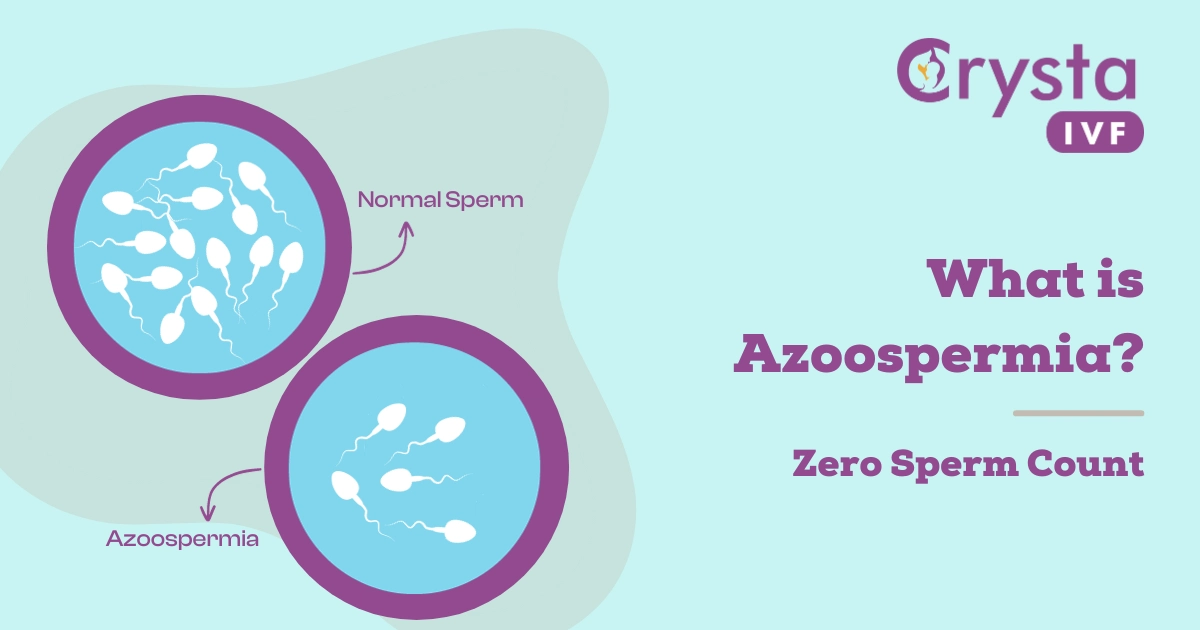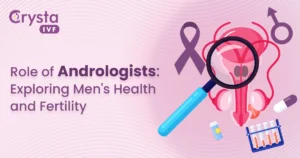Are you and your partner trying to start a new family but facing difficulties conceiving? Azoospermia means zero sperm count or nil sperm count could be the reason. It is called a medical condition when a man doesn’t have any sperm in his ejaculate, making conceiving harder. Have you heard of it for the first time? Well, you are not alone. Are you looking for answers to questions like why this happens and if there is any way to deal with this challenge? Let’s scroll through the blog to learn more.
Related: How Many Sperms Are Needed To Get Pregnant?
What is Azoospermia?
Azoospermia, also called no sperm count or zero sperm count, is a medical condition in which a man releases no sperm during ejaculation. The condition can hinder fertility and conception, and its timely analysis is essential to retrieve sperm for conception. It occurs due to blockage, hormonal imbalance, ejaculation problems, or issues with testicular function. The condition is further classified into two main categories: Obstructive Azoospermia and Non-obstructive Azoospermia.
Most of the causes responsible for the condition are treatable, and the rest, retrieve live sperm to be used in IVF that support conception.
Also read: 9 Ways to Boost Male Fertility and Increase Sperm Count
Zero Sperm Count Symptoms
You must also be wondering if there are any signs or symptoms of Zero sperm count or Azoospermia that you may need to watch out for, right?
Well, no, there are no symptoms associated with it, and you don’t realize the condition until you begin trying to conceive a child and fail to attain success.
While there are no symptoms, certain risk factors can elevate one’s risk of zero sperm count.
Factors That Elevate the Risk of Azoospermia:
- Genetics: Yes, your genes could be one of the risk factors that might elevate your chances of Azoospermia (Nil Sperm Count).
- Hormonal Imbalances: Hormone problems are not only restricted to women. Men also experience them. A condition that influences your hormone levels can also impact sperm production.
- Sexually Transmitted Infection: Gonorrhea, Chlamydia, or other sexually transmitted disease could be the reason raising the risk of obstructive Azoospermia.
- Lifestyle Factors: Your lifestyle choices are another factor that can influence your health and increase your risk of zero sperm count.
- Medications Or Medical Treatment: Reaction to certain medications or medical treatments can also put you at risk of developing this condition.
Identifying and addressing these potential risk factors in time can make a difference, allowing better management of the condition.
Book an appointment with India’s top Fertility Experts, Click here: https://crystaivf.com/fertility-expert
Causes Of Azoospermia (No Sperm Count):
If you look into the major causes responsible for the condition, look no further but below:
- Obstructive Causes: It could be due to Obstructive Causes, which means blockages in the tubes carrying sperm to prevent their release.
- Non-obstructive Causes: Problems within the testicles can also be the reason that could lead to low or no sperm production.
Besides, there could be some other unknown reasons that can remain unidentified despite thorough evaluation. Understanding these causes is critical for the right treatment and helping couples trying to conceive.
What are the treatments available for Azoospermia?
Azoospermia Treatment option depends on the type and underlying cause:
Obstructive Azoospermia:
- Surgical Interventions: Procedures like microsurgical epididymal sperm aspiration (MESA) or testicular sperm extraction (TESE) can help retrieve sperm from the reproductive tract. It addresses blockages that prevent sperm release and help facilitate conception.
- Vasectomy Reversal: If someone had a vasectomy in the past and is now experiencing Azoospermia, it means that vasectomy might be causing a blockage, stopping sperm from coming out during ejaculation. It can lead to Azoospermia and make it difficult for a man to become a father naturally. However, a surgical procedure called vasectomy reversal can help sperm flow again and potentially restore the chance of fathering a child.
Also read: Minimum Parameters for Healthy Sperm
Non-obstructive Azoospermia:
- Hormonal Therapy: Since Non-obstructive Azoospermia can result from genetic or hormonal imbalances, addressing these imbalances impacting sperm production may be helpful.
- Assisted Reproductive Techniques (ART): Secondly, the Sperm retrieval techniques (TESE or MESA) combined with assisted reproductive technologies like In Vitro Fertilization (IVF) help the sperm fertilize an egg outside the body and give a chance for couples to have a baby.
- Donor Sperm: When a man can’t make sperm or there is no viable sperm that can be retrieved, the use of donor sperm in conjunction with ART, like IVF, can give a couple a chance to have a baby.
Besides this, adopting a healthier lifestyle, including diet modification, regular exercise, or avoiding exposure to toxins, can positively impact sperm production.
Treatment choice depends on diagnosis, age, and other clinical evaluations. Therefore, consulting a fertility specialist is essential for informed decisions and better guidance.
Conclusion:
Despite the challenges it poses, a diagnosis of Azoospermia doesn’t necessarily mean the end of the road for couples hoping to have children, thanks to the progress in medical interventions and the support available to navigate this condition.
Looking for a reliable IVF Centre for Azoospermia treatment?
Crysta IVF is the best IVF Centre where your search will meet. We offer a range of IVF treatments to help people attain their goal of achieving pregnancy successfully.
 Verified by Crysta IVF Fertility Experts
Verified by Crysta IVF Fertility Experts
Related Post:
Comparing Azoospermia and Oligospermia: Understanding the Differences
Is ICSI the Only Option for Sperm Issues?




